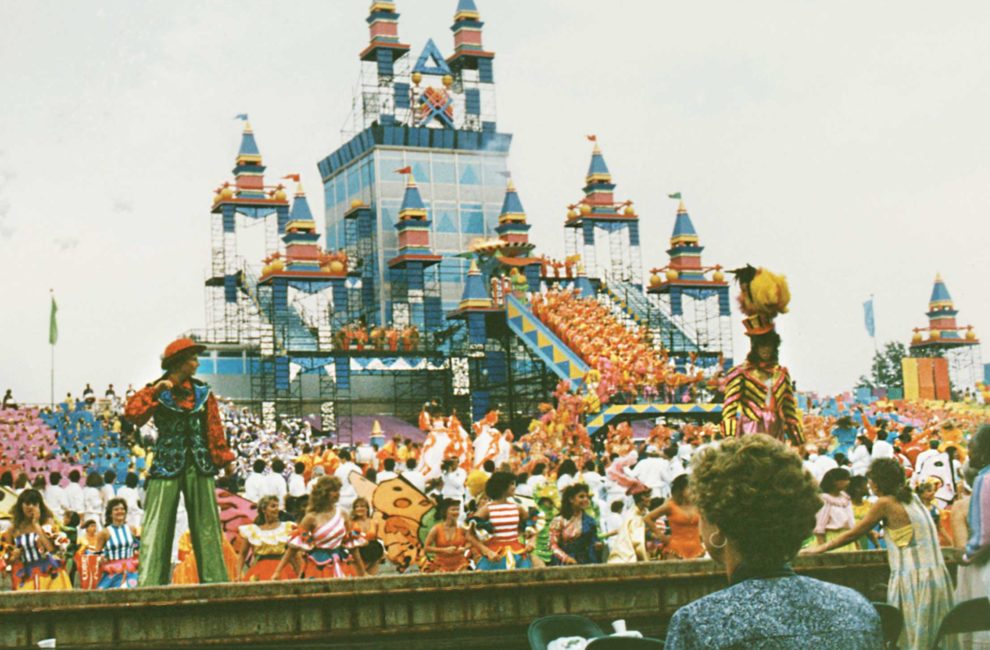Backtrack: Pan Am Games

The Pan Am Games opening ceremonies, hosted at Indianapolis Motor Speedway, launched with great fanfare. Courtesy The Digital Mayoral Archives at the University of Indianapolis
Despite the monumental investment of time and money and a long list of sports-related successes, no one expected Indianapolis to pull off an
international coup and land the 1987 Pan Am Games. Having declined to put in a bid to host them, Indy wasn’t even in the running.
Santiago, Chile, was chosen to host the event, which has been held every four years since 1951 among countries across the Americas. More than 4,300 athletes from 38 nations would compete in 1987.
But by 1983, the city was in the midst of political turmoil—and way behind on building venues—so the Pan Am Games governing board nixed it and awarded the games to the second runner-up. Nope, still not Indianapolis—Quito, Ecuador.
Then Quito withdrew in late 1984. Mayor William Hudnut, figuring that sports-aspirational Indianapolis had already constructed many of the facilities that would be required for the games anyway, traveled to Mexico City to meet with the Pan American Sports Organization and make a Hail Mary bid. He scored.
The idea did make some sense, after all. The Indiana Sports Corp. had formed in 1979 with the goal of turning Indianapolis into the “amateur sports capital of the world.” Indy aimed to become the country’s, maybe even the world’s, primary site for that kind of event. In the next eight years, the Indiana Sports Corp. hosted 53 athletic competitions, hauling more than $4 billion into the local economy and setting the city on a path to compete nationally as a sports destination.

The mascot, Amigo, represented friendship and unity across the Americas.Courtesy Indiana Historical Society
When the Pan Am Games bid was secured in 1984, with only two and a half years to prepare for an event that cities normally spent six years on, Indianapolis went full throttle. Carpenters built, painters painted, seating companies installed tens of thousands of temporary seats at 23 venues. Volunteers took Spanish lessons and signed up for training sessions to serve as greeters, drivers, and gophers for athletes and attendees. Walt Disney Company experts arrived to design and direct construction of a massive installation at the Indianapolis Motor Speedway, complete with castle-like turrets, soaring archways, and a fleet of hot-air balloons, to the tune of several million dollars.
A crowd of 70,000 to 80,000 attended opening-day ceremonies at the IMS and saw track-and-field legend Wilma Rudolph, by then director of the women’s track program at DePauw University, light the Pan Am cauldron.
The games stretched over three weeks that hot Indiana August. By the time closing ceremonies wound down at the Hoosier Dome, Indy had taken the gold on an international stage.





